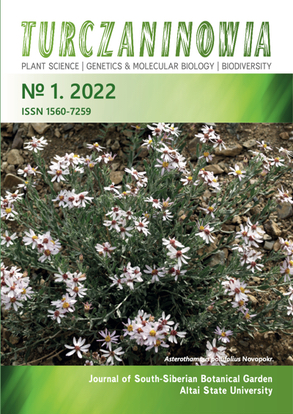Two new species of Phlegmariurus (Lycopodiaceae) from China
Abstract
Based on morphological study, two new species of the lycophyte genus Phlegmariurus Holub, P. yunfengii R.-H. Jiang et X.-C. Zhang and P. shingianus R.-H. Jiang et X.-C. Zhang from China are described and illustrated. Detailed description, ecology, distribution, conservation status as well as a comparison with morphologically similar species are provided.
Downloads
Metrics
References
Holub J. 1964. Lycopodiella, nový rod řádu Lycopodiales. Preslia 36(1): 16–22.
PPG I (The Pteridophyte Phylogeny Group). 2016. A community-derived classification for extant lycophytes and ferns. J. Syst. Evol. 54(6): 563–603. DOI: 10.1111/jse.12229
Zhang L. B., Iwatsuki K. 2013. Lycopodiaceae. In: Wu Z. G., Raven P. H., Hong D. Y. (eds.). Flora of China. Vol. 2–3. Beijing: Science Press; St. Louis: Missouri Botanical Garden Press. Pp. 13–34.
Turczaninowia is a golden publisher, as we allow self-archiving, but most importantly we are fully transparent about your rights.
Authors may present and discuss their findings ahead of publication: at biological or scientific conferences, on preprint servers, in public databases, and in blogs, wikis, tweets, and other informal communication channels.
Turczaninowia allows authors to deposit manuscripts (currently under review or those for intended submission to Turczaninowia) in non-commercial, pre-print servers such as ArXiv.
Authors who publish with this journal agree to the following terms:
- Authors retain copyright and grant the journal right of first publication with the work simultaneously licensed under a Creative Commons Attribution License that allows others to share the work with an acknowledgement of the work's authorship and initial publication in this journal.
- Authors are able to enter into separate, additional contractual arrangements for the non-exclusive distribution of the journal's published version of the work (e.g., post it to an institutional repository or publish it in a book), with an acknowledgement of its initial publication in this journal.
- Authors are permitted and encouraged to post their work online (e.g., in institutional repositories or on their website) prior to and during the submission process, as it can lead to productive exchanges, as well as earlier and greater citation of published work (See The Effect of Open Access).









